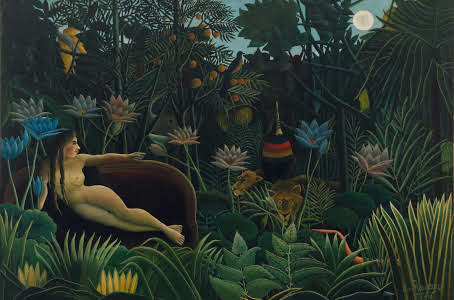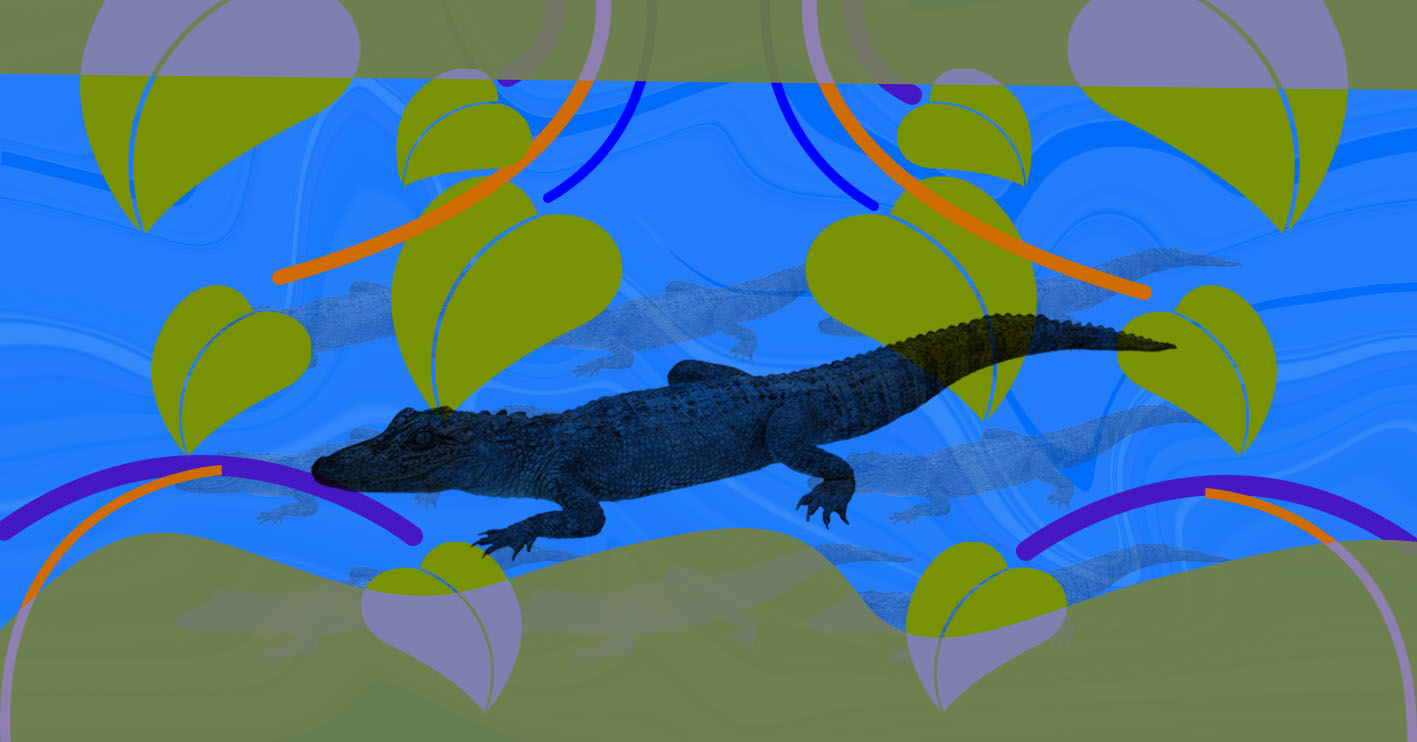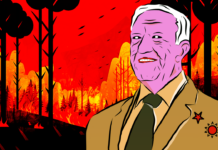- Ayahuasca and Dreaming - July 19, 2019
A crocodile, a pioneering rock band, and a Ryan Gosling film? As a psychotherapist working in New York City with patients who use ayahuasca, I am regularly surprised and compelled by the associations that emerge from the ayahuasca visions of patients seeking integration support. Using Jungian dreamwork practices throughout the integration process often helps patients to understand their visions more fully, embody their visions in the days following ceremony, and leads to deeper understanding of their psyches’ desire for growth. In this article, I describe how a Jungian dreamwork technique can be applied to ayahuasca integration.
Jung
Psychologist Carl Jung was a proponent of the prospective function of our psyches. Atlas1 explains Jung’s theory thusly: “prospective … refers to a visionary function; we consciously ‘look forward’ to future possibilities.” She continues to note
Jung disagreed with Freud about the nature of symbols and understood them as new possibilities, new transformations [emphasis added]; instead of a way backward to the past and scenes of our childhood, they are a way forward to the psychological future…pushing the psyche forward toward greater wholeness. (p. 33)
Jung believed that the unconscious provided those symbols to us primarily in our dreams.
Dreams
In his book, Inner Work (1986), Jungian analyst Robert Johnson gives a four-step approach to understanding the wisdom of a dream. This approach is easily applicable to the symbolic world of ayahuasca visions. Deep engagement with psychological and relational worlds creates a beckoning thread between our pre-ceremonial self and the self that the medicine draws us toward. These tools are exceptionally intuitive for ayahuasca integration, as Shipibo tradition teaches us that the dream realm and ayahuasca visions open each other and intersect.2

Dreamwork Steps
- The Click (Draw Associations)
Write down images from your ceremony and then write down every association (usually a person, word, phrase, or memory) that you have with each of these images. Don’t try to decide right off the bat which is the correct association: “The unconscious doesn’t follow the pathways of ego-logic”.3 Johnson assures us that the proper association will “click” and generate a surge of psychic energy when we discover it.
Nonetheless, many of these common ayahuasca visions can be construed to have deep symbolic meaning, psychological or not, and exploring their meanings across time and culture can draw our attention to new ways of thinking, post-ceremony.
Ayahuasca has a reputation for generating visions of similar content in drinkers across demographic and cultural differences, though this content varies somewhat notably from the content that Jung reports humanity finds in dreams. Shanon4 gathered data from reports of ayahuasca visions and noticed consistent reports of images of serpents, large cats (jaguars, tigers and pumas, but not lions), birds, palaces, large meadows and savannas, celestial and heavenly scenes, gold, crystal, precious stones, cloth, and similar elaborate patterns described by various individuals Shanon.5 pointedly notes that content from ayahuasca visions are not generally reducible to “the psychology of personality dynamics” or to Jungian archetypal content, such as The Wise Man, The Hero, and the Great Mother. Nonetheless, many of these common ayahuasca visions can be construed to have deep symbolic meaning, psychological or not, and exploring their meanings across time and culture can draw our attention to new ways of thinking, post-ceremony. The Book of Symbols6 (ARAP, 2010) can be an excellent starting place for an exploration of both categories of symbols.
It is important to not jump to archetypal or universal symbolic meaning immediately when generating associations from an ayahuasca vision. Personal associations are at least as relevant, and it is useful to not investigate larger symbolic associations until personal associations have been adequately explored.
2. What Part of Me is Like That? (Identify Dynamics)
Exploring the idea that any symbol or vision we encounter in a ceremony might be speaking to some part of ourselves, no matter how small or unfamiliar, can be a useful investigation
After finding an association that clicks, the next task is identifying the corresponding inner dynamics. Johnson (1986) suggests the following questions: “What part of me is like that [person, word, phrase or memory]? Where do I see the same trait in my personality? Who is it, inside me, who feels like that or behaves like that?” (p. 65). Ayahuasca seems to want to lead us to a deeper understanding of ourselves and show us parts of ourselves that we have not previously recognized. Exploring the idea that any symbol or vision we encounter in a ceremony might be speaking to some part of ourselves, no matter how small or unfamiliar, can be a useful investigation. I have listened to accounts of ceremonies in which ayahuasca drinkers were brought through intense memories of being abused by others, only to have the medicine shift gears quite quickly and ask the drinker to conduct a fearless exploration of what characteristics she might share with her abusers.
3. What is the Wisest Message? (Make Interpretations)
In order to start to formulate an initial interpretation of an ayahuasca ceremony (or segment of a ceremony), Johnson’s next suggestion around dreams is useful: “What is the central, most important thing this dream is trying to communicate to me? What is it advising me to do? What is the overall meaning of this dream for my life?” (p. 87).
Clarity about one’s life circumstances can often arrive suddenly during a ceremony, but taking action around that clarity also requires discernment
Johnson goes further to make the following poignant suggestions about interpretations: First, choose the interpretation that shows you something you didn’t know. Next, avoid the interpretation that inflates your ego or is self-congratulatory or shifts responsibility away from yourself. The suggestions around avoiding inflation when interpreting a dream is particularly relatable to ayahuasca. Cavnar7 reminds us that while using ayahuasca we are vulnerable to “the unfortunate outcome that is sometimes seen in enthusiasts: the ego, reinforced by witnessing its own glory, believing it has a dominant role to play in the unfolding drama, becomes full of certainty to the point of arrogance.” Finally, learn to live with dreams over time, fitting them into the long-term flow of your life. Clarity about one’s life circumstances can often arrive suddenly during a ceremony, but taking action around that clarity also requires discernment. Taking a sudden and irrevocable action as a result of an insight from a ceremony without integrating the experience more fully can cause chaos that diminishes the initial relief and wisdom of the insight.
4. What Ritual Can I Create?
Johnson’s final step in dreamwork is to create a ritual that gives your interpretation and integration “immediacy and physical concreteness” (p. 97). Our understanding of a psychological insight amplifies when we find a way to embody it, “taking principals from the unconscious and impressing them vividly on the conscious mind,” and also putting us into contact with powers greater than ourselves in a manageable way.
Even with those for whom rituals are an everyday practice (e.g., meditation, yoga, art-making, conscious eating, engagement with nature), engaging in these practices with the intention of connecting with the spirit of ayahuasca and concretizing meaning-making from the ceremony can amplify the power of these practices.

Clinical Example
A client seeking integration support described a vision during a ceremony in which there was a crocodile-like creature in a murky moat between her mat and her neighbor. The crocodile felt ominous and kept itself submerged during most of the ceremony, but stirred occasionally, reminding her of the potential of its massive size and power. She did not engage with it, but it never completely left her awareness.(*)
Post-ceremony, she began the dreamwork steps and wondered about her associations with a crocodile, and was reminded of a childhood trip to Florida where she visited Disney World, a place with crocodile motifs in many of its attractions, as well as live alligators on the property. She thought of the Pirates of the Caribbean ride and the Peter Pan ride. Additionally, she was reminded of a meaningful song from her past, titled Alligator,8. London, UK: Warp.] and revisited the lyrics “cut you in the heart” and “this is life and this love.” She remembered that she had often heard ayahuasca metaphorically compared to “heart surgery,” and was reminded that the song plays over the credits of the film Blue Valentine.9 She also wondered if the crocodile in the vision somehow provided a protective service between herself and the energy of the man on the mat beside her in the ceremony. In the midst of these rich associations, she felt the biggest emotional click with the song and the film.
She explored the dynamics of the song and film; both directly addressing themes of the melancholic disillusionment that can accompany mature adulthood and the relinquishment of the naive childhood fantasies of a life that is totally free of pain and chaos. These themes felt very resonant with the intention she had set upon starting ceremony: to receive help with the transition into the middle stage of life. She chose to sit with the following interpretation: “this recent sense of melancholy and confusion I have felt in my life is part of an initiation into adulthood and a fuller movement into the process of moving from fantasy to disillusionment to wisdom.” She ritualized the interpretation by making a descansos map, a written exercise recommend by Jungian Clarissa Pinkola Estes,10 “to cleanse yourself of your past and mark the small and big deaths that make your life your own, and then release them to embrace the future that awaits you” (p. 396).
It is also interesting to note that other associations from the client’s vision touch upon this same theme: the Jungian archetype of puer aeternus, the psychological term for an adult whose emotional world is stuck at an adolescent level (often referred to as “Peter Pan Syndrome”). In more universal symbolic terms, the crocodile is often seen as a menacing corrective for imbalance, perhaps referencing the client’s resistance to accepting the complicated truths of adulthood.
In some cases, clients will prepare for an ayahuasca retreat by engaging in a committed dreamwork practice prior to a retreat or ceremony, thus inviting an engagement between the conscious and unconscious
I have found this process very useful in assisting with ayahuasca integration. In some cases, clients will prepare for an ayahuasca retreat by engaging in a committed dreamwork practice prior to a retreat or ceremony, thus inviting an engagement between the conscious and unconscious. In these cases, the dream world is often flooded with content prior to ceremony, only to evaporate while one is using ayahuasca, then slowly trickling back to life in the months following ceremony.
As a psychotherapist, it is clear that me that there is great potential for healing in the application of many contemporary psychotherapy techniques and modalities to the integration of the experience of ayahuasca. When applied carefully, with respect and attention to the distinctions between the indigenous traditions of ayahuasca healing and Western psychotherapy, ceremony participants can use these techniques both on their own and with the care of helping professionals.
(*) Details have been changed to protect the identity of the client
References
- Atlas, G. (2015). The enigma of desire: Sex, longing and belonging in psychoanalysis. New York City, NY: Routledge. ↩
- Tafur, J. (2017). The fellowship of the river: A medical doctor’s exploration into traditional Amazonian plant medicine. Publisher: Author. ↩
- Johnson, R. (1986). Inner work: Using dreams and active imagination for personal growth. San Francisco, CA: Harper Collins. ↩
- Shanon, B. (1998). Ideas and reflections associated with ayahuasca visions. MAPS Bulletin 8(3), 18–21. ↩
- Shanon, B. (2002). The antipodes of mind. Oxford, UK: Oxford University Press. ↩
- Archive for Research in Archetypal Symbolism (ARAP). (2010). The book of symbols. Berlin: Taschen. ↩
- Cavnar, C. (2019, February). Ayahuasca, healing, identity, and ego. Presentation, Psychedelic Society of San Francisco, San Francisco, CA. ↩
- Grizzly Bear. (2007). Alligator. On Friend [Vinyl Record ↩
- Patricof, J., Howell, L., & Orlovsky, A. (Producers) Derek Cianfrance (Director). (2010). Blue Valentine (Film). Montreal: Alliance Vivafilm. ↩
- Estés, C.P. (1992). Women who run with the wolves: Myths and stories of the wild woman archetype. New York City, NY: Ballantine Books. ↩
Take a minute to browse our stock:
Did you enjoy reading this article?
Please support Chacruna's work by donating to us. We are an independent organization and we offer free education and advocacy for psychedelic plant medicines. We are a team of dedicated volunteers!
Can you help Chacruna advance cultural understanding around these substances?














